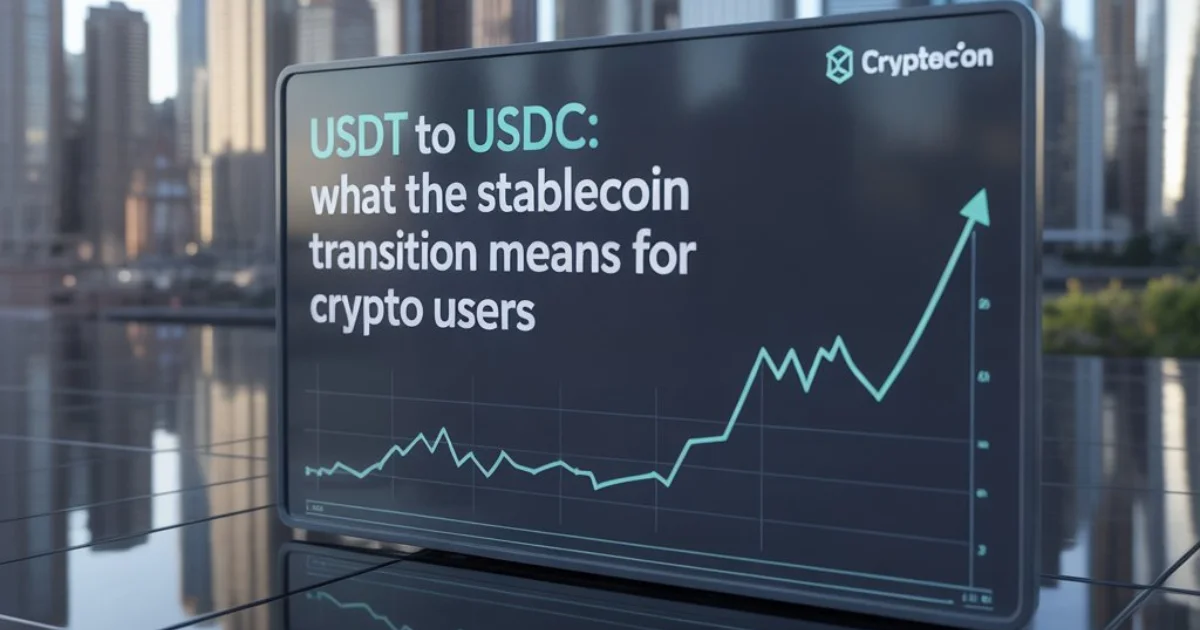Introduction
In the fast-moving world of cryptocurrency, stablecoins play a unique role. Unlike Bitcoin or Ethereum, which fluctuate in value daily, stablecoins are designed to hold steady. They are pegged to a reserve asset like the US dollar, allowing users to trade, invest, and transfer money without worrying about massive price swings.
Two of the biggest stablecoins today are Tether (USDT) and USD Coin (USDC). While both are pegged to the US dollar, they differ in governance, transparency, and adoption. Recently, the discussion around USDT to USDC conversions has become more important as regulators push for clearer rules and investors seek safer, more transparent digital dollars.
This article explains what USDT and USDC are, why traders might switch between them, how to convert safely, and what this trend means for the broader crypto industry.
Understanding USDT and USDC
What is USDT (Tether)?
USDT, or Tether, was launched in 2014 and is the oldest and most widely used stablecoin. It is pegged 1:1 to the US dollar, meaning 1 USDT should always equal $1. Tether is the most traded stablecoin, with billions in daily volume, and it is widely used across global crypto exchanges.
However, Tether has faced criticism regarding its reserves transparency. While it publishes reports, some regulators and analysts argue that it has not always been clear about how each USDT is backed.
What is USDC (USD Coin)?
USDC, launched in 2018 by Circle and Coinbase under the Centre Consortium, is also pegged to the US dollar. It has gained popularity for its regulatory compliance and transparency. Circle provides monthly attestations from independent accounting firms, ensuring that each USDC in circulation is backed by an actual US dollar or equivalent safe assets.
Why Convert from USDT to USDC?
Traders and institutions are increasingly converting USDT to USDC for several reasons:
-
Regulatory Compliance: USDC is seen as more transparent and regulator-friendly, which makes it appealing to institutions.
-
Transparency: Circle regularly audits and publishes reserve data, providing more trust to investors.
-
Risk Management: Some users fear regulatory action against Tether, which might impact USDT’s stability in the future.
-
Market Opportunities: Traders often switch between stablecoins to take advantage of arbitrage opportunities.
How to Convert USDT to USDC
Converting USDT to USDC is straightforward, and there are multiple methods depending on user preference.
1. Crypto Exchanges
Most major exchanges like Binance, Coinbase, Kraken, and KuCoin allow direct USDT to USDC trading pairs.
Steps:
-
Deposit USDT into your exchange account.
-
Search for the USDT/USDC pair.
-
Enter the amount and execute the trade.
-
Withdraw your USDC to your wallet.
2. DeFi Platforms
On decentralized exchanges (DEXs) like Uniswap or Curve Finance, users can swap USDT to USDC directly through smart contracts.
Steps:
-
Connect your crypto wallet (e.g., MetaMask).
-
Choose USDT as the token you want to swap.
-
Select USDC as the receiving token.
-
Approve and confirm the transaction.
3. Stablecoin Platforms
Circle offers a native swap option for institutional users, enabling direct 1:1 conversions of USDC.
Fees and Transaction Times
-
Exchange Fees: Centralized exchanges usually charge 0.1%–0.5% trading fees.
-
Blockchain Fees: On Ethereum, gas fees may apply, while on networks like Tron or Solana, fees are significantly lower.
-
Speed: Most swaps finalize within minutes, depending on blockchain congestion.
Market Trends: USDT to USDC in 2025
The trend of converting USDT to USDC has grown in recent years due to increased regulatory scrutiny. In 2025, several key factors are influencing this shift:
-
Institutional Adoption: Businesses and fintech firms prefer USDC due to its compliance with US regulations.
-
DeFi Growth: USDC is more commonly used in DeFi protocols as collateral for lending, borrowing, and yield farming.
-
Cross-Border Payments: Companies exploring blockchain-based payments find USDC’s transparency more reliable.
-
Regulatory Crackdowns: Governments worldwide are monitoring Tether more closely, making some users cautious.
Security and Risks of Conversion
While swapping between stablecoins is generally safe, risks still exist:
-
Smart Contract Risks: DeFi swaps may involve vulnerabilities.
-
Exchange Risks: Centralized exchanges can be hacked or restrict withdrawals.
-
Peg Stability: Though both aim to stay at $1, market stress can cause temporary deviations.
Tip: Always use reputable exchanges or audited DeFi platforms when converting USDT to USDC.
USDT vs USDC: A Side-by-Side Comparison
| Feature | USDT (Tether) | USDC (USD Coin) |
|---|---|---|
| Launch Year | 2014 | 2018 |
| Issuer | Tether Limited | Circle + Coinbase (Centre) |
| Transparency | Limited | High (monthly attestations) |
| Adoption | Very high (global) | Growing, especially in US |
| Compliance | Criticized for opacity | Strong regulatory backing |
| Use Cases | Trading, remittances | DeFi, payments, institutions |
Real-World Example
In 2023–2024, when US banks faced liquidity issues, some investors pulled funds from USDT over concerns about Tether’s reserves and shifted into USDC. Exchanges like Coinbase and companies such as Cherry Servers, which announced a transition from USDT to USDC, encouraged users to adopt USDC for greater transparency and compliance.
This trend highlighted how user confidence and regulatory clarity can influence the stablecoin market.
Future of Stablecoin Transitions
The USDT to USDC shift is not just about swapping one token for another—it reflects a bigger transformation in the crypto world. As governments move toward Central Bank Digital Currencies (CBDCs) and stricter stablecoin regulations, the market may favor fully transparent and compliant tokens.
Industry experts believe that while USDT will remain dominant in trading volumes, USDC could become the preferred choice for institutions, enterprises, and DeFi projects in the coming years.
FAQs
1. Is it safe to convert USDT to USDC?
Yes, if done through reputable exchanges or audited DeFi platforms. Always double-check wallet addresses and fees.
2. Do USDT and USDC always equal $1?
Both aim to stay at $1, but temporary price deviations can occur during high market volatility.
3. Which is better: USDT or USDC?
USDT offers higher liquidity and adoption, while USDC provides greater transparency and regulatory compliance. The choice depends on your goals.
4. Can I use USDC instead of USDT in trading?
Yes, but not all exchanges and trading pairs may support USDC. USDT remains more widely available for global crypto trades.
5. What’s the cheapest way to convert USDT to USDC?
Using exchanges on low-fee blockchains (like Tron or Solana) is usually cheaper than swapping on Ethereum due to gas fees.
Conclusion
The conversion from USDT to USDC is more than just a simple swap—it symbolizes the evolving dynamics of the crypto market. While USDT dominates in liquidity and global adoption, USDC continues to grow as a trusted, compliant, and transparent digital dollar.
For everyday users, traders, and institutions, understanding this shift is crucial. As crypto regulations tighten, the demand for transparent and reliable stablecoins like USDC will likely increase, shaping the future of digital finance.


